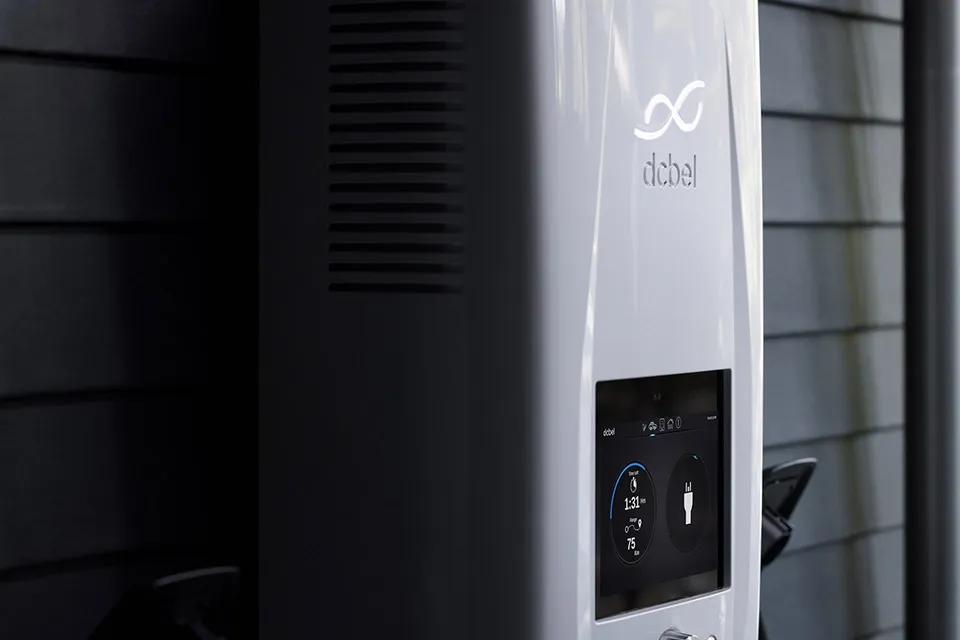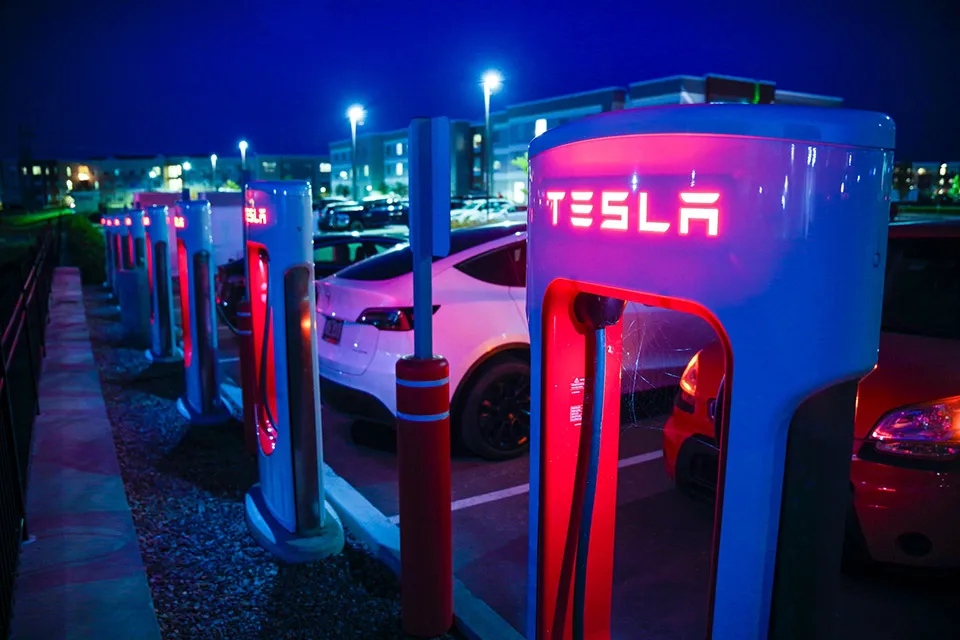Guide to EV Charging Stations

With the U.S. setting a target to make half of all new vehicles sold in 2030 zero-emissions, more and more EVs will begin to fill up the roadways. Just like your current car needs to stop at a gas station every once in a while, an EV must stop at a similar spot to get it full of energy. These EV charging stations may soon have just as many locations as traditional gas stations, and new EV drivers will need to know what they are and how they work.
What Is an EV Charging Station?
An electric vehicle charging station is a device that allows EV drivers to charge up their vehicles so they can continue operating. Think of an EV station like a gas station; in the same way that an internal combustion engine car needs gas for fuel, EVs power up with electricity. Whether installed at someone's home or on commercial property, EV chargers allow electric vehicles and plug-in hybrids to fill up their batteries and get back on the road.
So how does EV charging work? Basically, EV chargers send electric currents from a 240v outlet or grid directly into your vehicle. Like plugging your phone into an outlet, you plug your car in and wait for your battery to fill up. These stations charge vehicles at various speeds depending on their charging level.
How Do Charging Stations Work?

Charging stations supply electric energy to recharge the batteries of EVs, and they come in various types with differing capabilities. At the core, a charging station connects to an electrical power source and transfers electricity to the EV's battery through a connector.
There are three primary levels of EV charging stations: Level 1, Level 2, and DC Fast Charging. Level 1 chargers use a standard household outlet and provide the slowest charge, typically adding about 3-5 miles of range per hour. Level 2 chargers require a 240-volt outlet, similar to those used by household appliances like dryers, and can add 10-60 miles of range per hour, depending on the vehicle and charger specifications. DC Fast Chargers, also known as Level 3 chargers, use direct current to charge batteries much faster, often adding 60-100 miles of range in just 20-30 minutes.
The process of charging involves several steps. When an EV is plugged into a charging station, the station communicates with the vehicle to ensure a safe connection. The station then monitors the battery's state and delivers the appropriate amount of electricity. Advanced charging stations can also provide data on the charging status, energy consumption, and estimated completion time, often accessible via a mobile app or a display on the charger.
Do You Have to Pay to Charge Your Electric Car at a Charging Station?
The cost of using charging stations for electric vehicles (EVs) can vary widely depending on several factors, including the type of charging station, the location, and the policies of the provider. While some charging stations are free to use, especially those provided by certain businesses or municipalities as a perk or incentive, many others require payment.
Free charging stations are often found at locations such as shopping centers, workplaces, and public parking lots. These are typically Level 1 or Level 2 chargers and are offered to attract customers or employees, or as part of a city's efforts to promote green transportation.
Paid charging stations are more common and can be found in a variety of locations, including public spaces, highways, and dedicated EV charging networks. The cost structure for these stations varies; some charge a flat fee per charging session, while others bill based on the amount of electricity consumed (measured in kilowatt-hours) or the time spent charging.
It's also worth noting that the cost of charging an EV at home, using a standard household outlet or a dedicated home charging station, is usually lower than public charging options. Home charging allows EV owners to take advantage of lower electricity rates during off-peak hours, further reducing the overall cost of vehicle operation.
EV Charging Station Companies

Dozens of companies make EV charging stations with different locations and levels available worldwide. These companies include:
Tesla
One of the most recognizable EV companies on the planet, Tesla is also one of the most prolific electric car charging station creators. Tesla owns and operates a network of chargers located all around the world known as Superchargers. With over 35,000 individual chargers and more than 4500 sites, these Superchargers can be found near most major highways, freeways, and other arterial roads. Tesla also makes chargers for home, office, and retail purposes. For the most part, their charging devices are designed specifically for use in Tesla brand vehicles.
Chargepoint
Next to Tesla, Chargepoint has created one of the largest global EV charging networks. In addition to charging stations, Chargepoint integrates hardware, offers cloud services, and maintains a 24/7 tech support line that customers can contact. The company has delivered hundreds of millions of charges, facilitated by its network of over 60,000 EV charging stations.
Shell
You've probably seen many Shell gas stations in your life, but did you know they also run EV charging stations? As an energy company with a history stretching over 100 years, Shell has begun to turn their eyes away from fossil fuels and toward the future. With an established network of stations already created, Shell is quickly becoming one of the biggest EV charging companies worldwide. They are also making their way into the home, business, and retail charging markets, as well as mobile chargers for on-the-road battery fill-ups.
Number Of EV Charging Stations By State
As of 2022, hundreds of thousands of charging ports in the United States are servicing millions of EVs of all types. With public charging stations available in every state, here are a few areas with the highest number of EV charging ports.
- California: California currently has the highest number of charging stations, with over 15,182, accounting for over 28.7% of the U.S. total.
- New York: New York state has the second most charging stations with 3,085, accounting for 5.8% of the U.S. total.
- Florida: Florida ranks third with 2,858 charging ports accounting for 5.4% of the U.S. total.
- Texas: Texas has the fourth most charging stations, with 2,419, accounting for 4.6% of the U.S. total.
- Massachusetts: Massachusetts has the fifth most charging stations, with 2,328, accounting for 4.4% of the U.S. total.
With More Charging Stations Than Ever, EVs are Becoming More Convenient
The adoption of EV technology is spreading, and the market for electric vehicles is growing. If you are looking into buying a used EV, you can get more information about any available model with a vehicle history report. These reports can help you find better deals and give you essential details like accident history, specification data, and the number of previous owners.
FREE Vehicle Search
- Accidents
- Problem Checks
- Title Records
- Recalls
- Values
- Specs
-
InfoPay, Inc. (dba GoodCar) is an Approved NMVTIS Data Provider
-
-























